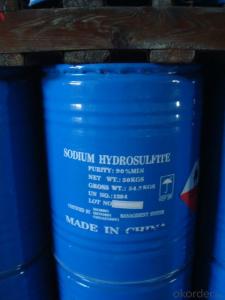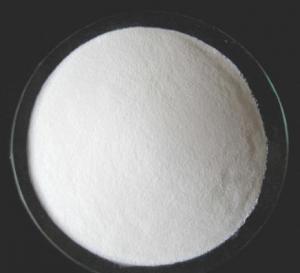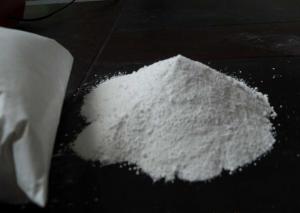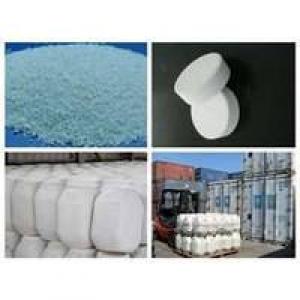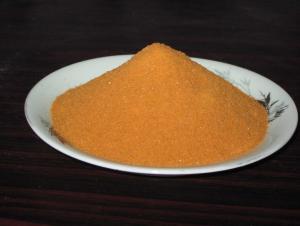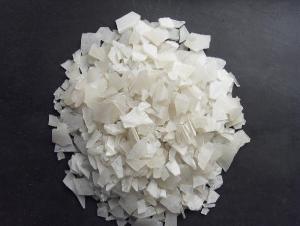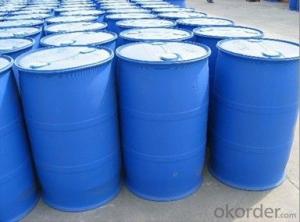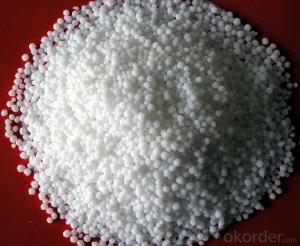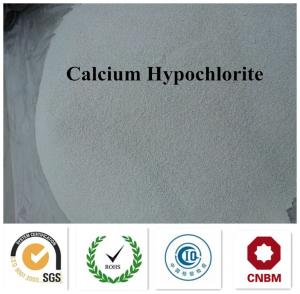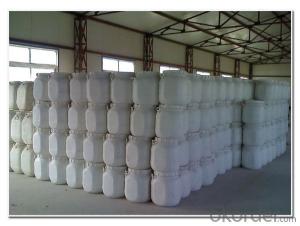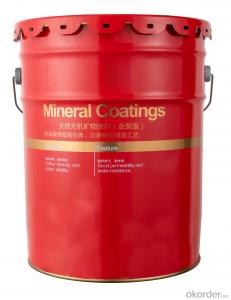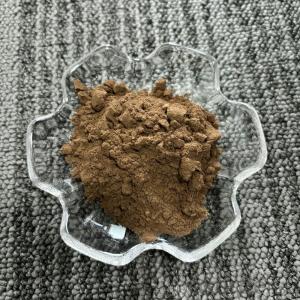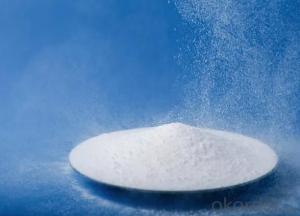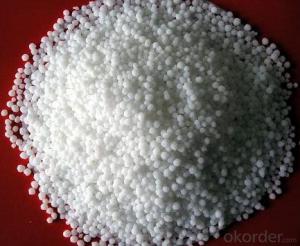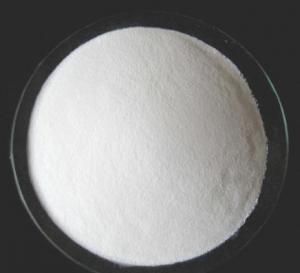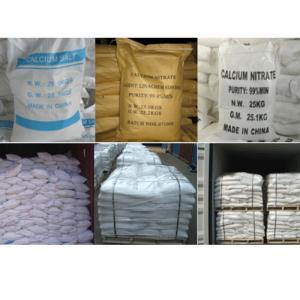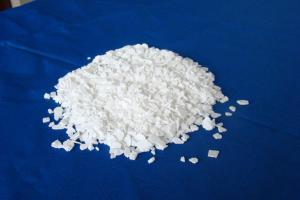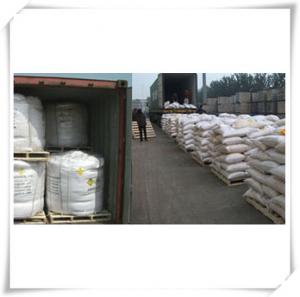Sodium Hydrosulphite with Good Price and Best Quality
- Loading Port:
- Qingdao
- Payment Terms:
- TT or LC
- Min Order Qty:
- 22 m.t.
- Supply Capability:
- 3000 m.t./month
OKorder Service Pledge
OKorder Financial Service
You Might Also Like
1.Structure of Sodium Hydrosulfite Description:
Commodity name: Sodium Hydrosulfite Na2S2O4 Sodium Hydrosulfite Sodium Dithionite Price
Molecular formula:Na2S2O4
Molecular weight:174
CAS Number 7775-14-6
H.S code 28311010
UN number 1384
Class 4.2
2.Main Features of Sodium Hydrosulfite:
It is a versatile chemical that's used in the manufacture of a variety of products we all use every day,
from photographic film to wine; from fine writing papers to leather goods; from colored fabrics to metal recovery.
While the applications for this chemical workhorse are as vast and as varied as the industries that use it,
in most cases, sodium hydrosulfite performs one of the following three roles:
1) As reducing agent, hydrosulfite chemically reduces othercomponents by donating an electron or electrons
2) As sulfonating agent, hydrosulfite adds sulfur to another chemical compound
3) As cation source, hydrosulfite adds a cation, or sodium, to a product system
3.Sodium Hydrosulfite Images
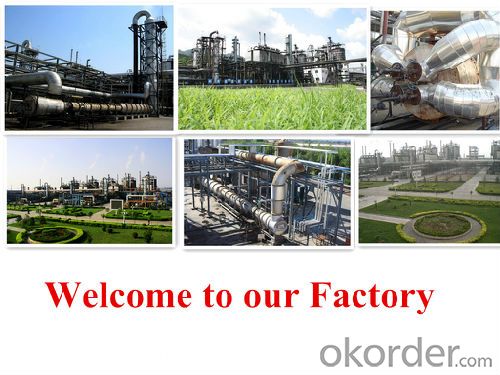


4.Sodium Hydrosulfite Specification
Standard:HG2932-1999
Index | Technical Grade HG/T 2074-2011 | Food Additive GB 22215-2008 | ||
Na2S2O4, | ≥ 90% | ≥ 88% | ≥ 85% | ≥ 88% |
Iron (Fe), | ≤20ppm | ≤ 20ppm | ≤ 20ppm | ≤ 20ppm |
Zinc (Zn), | ≤ 1ppm | ≤ 1ppm | ≤ 1ppm | ≤ 1ppm |
solution appearance | clear | clear | clear | clear |
EDTA, | / | / | / | qualified |
Arsenic(As), | / | / | / | ≤ 1ppm |
Other heavy metal( As Pb), | ≤ 1ppm | ≤ 1ppm | ≤ 1ppm | ≤ 1ppm |
Formate (As HCHO), | / | / | / | ≤ 0.05% |
water insolubles, | ≤ 0.05% | ≤ 0.05% | ≤ 0.05% | / |
Cadmium (Cd) | / | / | / | ≤ 2ppm |
Plumbum (Pb) | / | / | / | ≤ 5ppm |
5.FAQ
1, how about your packing?
My main packing is 25kg or 1000kg PP PE or kraft bag , with or withour pallets,with or without anticaking. We also can make packing and shipping mark are your ask, such as 50kg/50bl bag.
2, how long time you can make the shipping?
We can make the shipping within 5-10day after confirm the order.
3, why you buy from me?
We have stable quolity and price, not best quolity and price. It is not true for best quolity and best price. Our factory is manufacture according the BP USP and FCCIV terms. We have in this line for more than 8 years. We are one of the biggest exporter from Qingdao port.
- Q:Which minerals is richest source of Inorganic Salts ?
- Minerals are inorganic salts - eg.potassium nitrate - absorbed by plants from soil - a good source of inorganic nitrogen and potassium.
- Q:What is the most important inorganic salt in plant growth?
- The inorganic salts required by plants are nitrogen, phosphorus and potassium containing inorganic salts, and if any lack of plants will affect the normal growth of plants, nitrogen is a component of many important organic compounds in the body, such as protein, nucleic acid, chlorophyll , Enzymes, vitamins, alkaloids and some hormones contain nitrogen. Nitrogen is also the basis of genetic material in all organisms, the most important protein, it is often in the center of metabolic activity.Now is to limit the growth of plants and the formation of the primary Factor. It also has a significant effect on improving the quality of the product.K2 is dissolved in the plant juice, and its main function is related to the metabolism of the plant.The content of phosphorus in the plant is second only to nitrogen and potassium, Phosphorus plays an important role in plant nutrition. Almost all important organic compounds in plants contain phosphorus. Phosphorus is involved in photosynthesis, respiration, energy storage and delivery, cell division, cell enlargement and other processes in plants.
- Q:Urine in the inorganic salt content is higher than the original urine
- Because the original urine to be re-absorption
- Q:as a example potesium,sodium,magnees,calcium
- The sodium-potassium pump is most important in controlling the working of neurotransmitters. Calcium ion is also generated in voltage gated Ca++ channel, and Magnesium is necessary for metabolic functions. But Sodium is one of the most important inorganic component in our body. Of course Potassium is also as important. But, if you have ever seen the back of all food products there is a special part showing amount of Sodium in it...even Snacks.. :)
- Q:What is the difference between organic salt and inorganic salt?
- An organic salt contains a cation or anion that is derived from an organic compound (compounds that contain carbon), e.g. acetate (anion) from acetic acid, or triethyl ammonium (cation), from triethylamine. An inorganic salt is one that doesn't contain an organic cation or anion. Carbonates are not considered organic compounds, even though they contain carbon.
- Q:What is the physiological function of inorganic calcium
- Cells and organisms of the important components
- Q:What is inorganic salt
- Inorganic salts are important for the structure of tissues and cells. Hard tissues such as bones and teeth are mostly composed of calcium, phosphorus and magnesium, and soft tissue contains more potassium. The inorganic salt ions in the body fluid regulate the permeability of the cell membrane, control the water, maintain normal osmotic pressure and acid-base balance, and help transport the general element to the body, participate in nerve activity and muscle contraction. Some are inorganic or organic compounds that are involved in many important physiologic functions, which are constituents of enzymes that make up enzymes, hormones, vitamins, proteins and nucleic acids, or as activators of various enzyme systems. For example: to maintain the heart and brain activity, to help the formation of antibodies, play a useful role in the human body.
- Q:Nutritional characteristics of carbohydrates and inorganic salts in vegetables
- Inorganic salts: its rich, such as calcium, phosphorus, iron, potassium, sodium magnesium, copper, is an important source of inorganic salts, to maintain the body's role in acid-base balance play an important role. Green leafy vegetables generally contain more than 100mg / 100g. But should pay attention to the removal of part of the oxalic acid during cooking, may be conducive to the absorption of inorganic salts.
- Q:I tried sodium and potassium carbonate and had little luck. Anyone know where to find the solubility data of inorganic salt in DMF?Thanks.
- Sodium and potassium carbonate WILL dissolve in DMF. The best way to dissolve them is to... a) dry the solid inorganic salt in an oven (> 100 degrees C) overnight. b) pulverize the powder and grind several minutes with mortal and pestle. c) sonicate the mixture for several minutes...
- Q:What is the use of inorganic salts in plants? How is it discharged
- Not just light plants, for the body, the inorganic salts are essential. Can provide the necessary elements, including a large number of elements C, H, O, N, S, P, K, Ca, Mg. Trace elements Fe, Mn, B, Zn, Cu, Mo, Cl, Ni, etc. For plants, inorganic salts are also essential. The inorganic salts provide C, H, O are the essential elements of the constituents of the carbohydrate, N is the essential element that constitutes the protein, P is the essential element that constitutes ATP and DNA, and so on, including trace elements such as: B, Will cause the plants to flow only without fruit. These elements may be provided in the form of inorganic salts. So inorganic salts are necessary for plants. On the issue of discharge. Plants will use these elements, C, H, O synthetic carbohydrates, in the role of respiration when the decomposition of carbon dioxide and water to the nature of the. Plants also store oil and fat, protein, such as peanut oil and protein content is high. In general, the plant is the inorganic salt into organic matter and stored, through the decomposition of part of the organic matter to breathe in the form of other inorganic substances. Apoptosis is also the way in which the inorganic salts it absorbs are discharged in the form of organic matter. In general, the inorganic salts absorbed by the plant are discharged in the form of other inorganic substances (respiration) or in the form of organic matter (apoptosis). Plants will use these inorganic salts.
1. Manufacturer Overview |
|
|---|---|
| Location | |
| Year Established | |
| Annual Output Value | |
| Main Markets | |
| Company Certifications | |
2. Manufacturer Certificates |
|
|---|---|
| a) Certification Name | |
| Range | |
| Reference | |
| Validity Period | |
3. Manufacturer Capability |
|
|---|---|
| a)Trade Capacity | |
| Nearest Port | |
| Export Percentage | |
| No.of Employees in Trade Department | |
| Language Spoken: | |
| b)Factory Information | |
| Factory Size: | |
| No. of Production Lines | |
| Contract Manufacturing | |
| Product Price Range | |
Send your message to us
Sodium Hydrosulphite with Good Price and Best Quality
- Loading Port:
- Qingdao
- Payment Terms:
- TT or LC
- Min Order Qty:
- 22 m.t.
- Supply Capability:
- 3000 m.t./month
OKorder Service Pledge
OKorder Financial Service
Similar products
New products
Hot products
